Elon’s Kickbox program is empowering students to pursue big and small ideas, fostering innovation and creativity across campus along the way.
Every innovation begins with an idea. Since opening in 2015, the Elon Maker Hub has provided students, faculty and staff with the means to explore their ideas, no matter how ambitious or complex. Throughout the years, dozens of innovative, creative and personal projects have come out of the Maker Hub, many of which were supported by the Kickbox program. Modeled after Adobe’s Kickbox Foundation, Elon Kickboxers receive a box full of resources and a $300 gift card to make their ideas a reality under the guidance of a faculty or staff sponsor. The results have been inspiring. Here are some of them.
A Way to Belong
Tiffany Huang ’23 /// Communication Design Major
Project: Asian Pacific Islander (API) Flag Board
Kiah Glenn, former assistant director of the Center for Race, Ethnicity, and Diversity Education
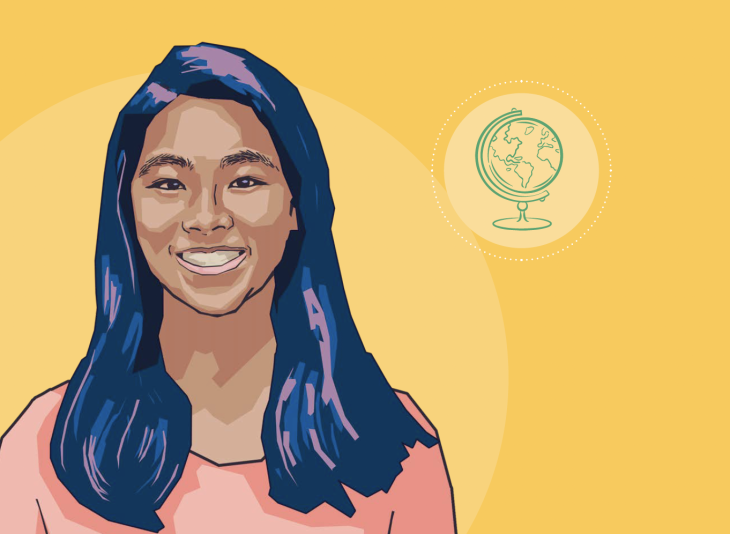
When Tiffany Huang ’23 arrived on Elon’s campus, she was doubtful she’d find other students from her native country, Taiwan. To her surprise, in her first few weeks on campus, she saw a Taiwanese flag in the Global Neighborhood and heard students speaking her dialect of Chinese. “I’ll never forget how overjoyed I was seeing that and knowing that there is representation here,” Huang says.
Inspired by those experiences, Huang set out to create a hub of representation for Asian Pacific Islanders on campus to ensure other students didn’t have the same worry she had about being alone. Her idea was to create a flag board displaying the various Asian nations represented by current Elon students to be placed in the Asian Pacific Islander Community Room, which is part of the Center for Race, Ethnicity, and Diversity Education (CREDE). As a communication design major, Huang was more than prepared to create the board itself adorned with dozens of flags.
Huang first heard about the Maker Hub during her Elon 1010 course and had friends who worked there. She thought the Kickbox program would be a great conduit to bring her idea to fruition. She found a mentor in Kiah Glenn, former assistant director of the CREDE, and through input from Glenn and other API students, Huang was encouraged to take her creation a step further — making the flag board interactive and personal.
Huang sent surveys to the Elon community to gather what nations were represented among the student body to be displayed on the board. She also reached out to student organizations such as EMPRESS, Surtal and Asian-Pacific Student Association for their input on the board. The result was over 49 API flags and dozens of images from students displayed on the board. Although Huang created it, like any good and thriving community, the action of its members is what truly fosters it.
“I hope this will be a living display of the strength of the API community here at Elon,” Huang says, adding the board is a way for students to connect with each other to see that they aren’t alone. “Because we go to a PWI [predominantly White institution], it’s inevitable that you’ll feel like a minority but it’s great knowing that you have support and that there are other people out there like you on campus.”
Sparking Creativity
Chuck Buckley ’00 /// Elementary School Teacher
Project: Escape Room in a Box
Sponsor: Ren Bryan, retired adjunct assistant professor of education
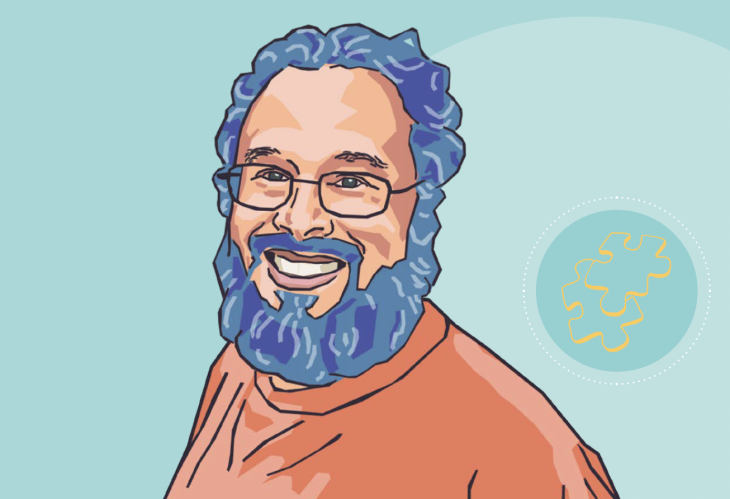
A 2000 Elon graduate, Chuck Buckley returned two decades later to get his Academically/Intellectually Gifted (k-12) Education licensure. Keen on making the most of his campus experience and with a preexisting interest in 3d printing, Buckley sought out the Maker Hub.
From there, he created several smaller projects, including a board game about Africa for his second-grade class focused on the continent and a finger labyrinth as a Christmas present for his wife. “At that point, I started seeing posters going up about Kickbox and I wanted to jump in on that,” Buckley says. “I had always wanted to make an escape room, and this was the perfect jumping-off point for me to do it.”
Admittedly, Buckley says a full escape room was too ambitious. So instead, he decided to create a miniature “escape room” in a box.
The box is portable and has a range of difficulties to appeal to everyone from second graders to amateur puzzlers. But age is of no consequence, as a second grader once held the record for the fastest solving of the puzzle at 23 minutes.
The escape room consists of three boxes:a security box with a digital code reader, inside a wooden box with a directional lock, inside a leather chest with a bike lock around it. Inside each box are clues to get to the next step of the puzzle. Along with the boxes are a deck of cards, a cryptex (a portable vault that hides secret messages) and little plastic pieces that must be arranged in a certain way to be solved. “It’s wonderfully involved,” Buckley says.
Along with appealing to Buckley’s interest in puzzles, the box also serves as an innovative teaching tool in the classroom. “I wanted specifically to do this so that when I did become an AG teacher, I would have this as something that my AG students could do,” he says. “I wanted to use this as a jumping-off point to talk about critical thinking, group dynamics, problem and solution connections and, to a certain degree, where inspiration comes from.”
Buckley has run the escape room more than 50 times. His biggest regret is not getting around to making a second one. “The Kickbox has been a wonderful opportunity and it was one of the highlights, if not the highlight, of that year I had back at Elon,” Buckley says. “It was definitely something that fueled the imagination, and it was a great opportunity to explore creativity.
“I think anyone who has a little spark of creativity they want to explore and expand on, this is a great way to do that.”
A Sustainable Outlook
Grace Granger ’22 /// Theatrical Design and Technology Major
Project: Water Consumption Measuring Shower
Sponsor: J.P. Mullican, technical director and instructor in the Department of Performing Arts
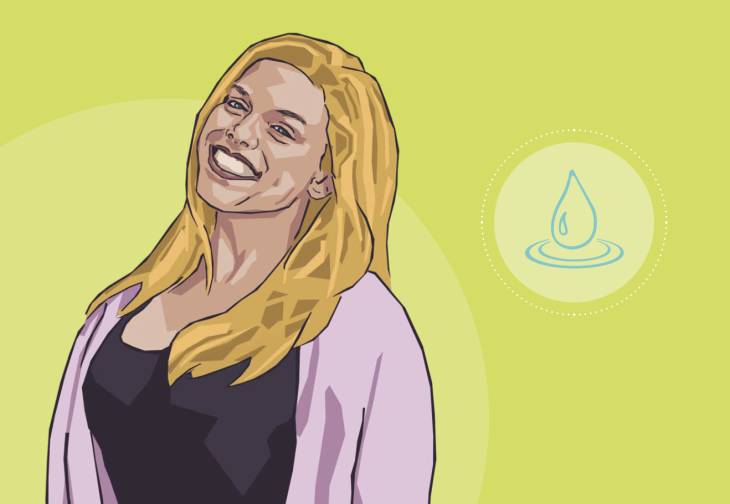
Like most people who find the Maker Hub, Grace Granger ’22 started with smaller creations like stickers, laser engraving and other art projects.
But as an entrepreneur minor, Granger found herself using the Maker Hub more frequently to complete certain class assignments. During her time at the Hub, Granger heard about the Kickbox project and thought it would be worthwhile pursuit. The only trouble — she didn’t have an idea
to pursue.
Sustainability is an issue dear to Granger, who co-founded Elon U-Thrift, an online clothing shop designed to cut back on fast fashion and clothing waste. But she still was uncertain about how to apply the issue of sustainability to a Kickbox project.
When talking with her eventual project sponsor, J.P. Mullican, technical director and instructor in the Department of Performing Arts, he advised her to think about everyday problems. “One day, I was talking to a friend of mine and she was like, ‘I love taking 30-minute hot showers.’ And in my head, I was like, ‘What the heck? That’s so bad for the environment.’ But then I was like, ‘I have my idea,’” Granger says.
The average American uses more than 17 gallons of water during an average eight-minute shower. Decreasing precipitation due to climate change and increasing populations are potential catalysts for water shortages. All of this led Granger to create a water consumption measuring shower. By connecting a smart hose faucet timer to the shower and using the corresponding phone app, Granger was able lower the flow rate of the water to 1.75 gallons per minute from the average of 2.5, equaling 2,900 gallons saved. The project was straightforward
for the most part, but Granger did run into some issues with the electrical work and converting the sprinkler system for a shower head. She honed her adaptability and problem-solving skills during this semester-long project. But more than her resourcefulness, this process taught her how to lean on people willing to offer their help.
“I went in there with no idea what to do and I had to rely on my Kickbox mentor more than I thought I would,” she says. “This helped me feel more comfortable reaching out and actively searching for learning opportunities.”
Bridging Experiences
Ryan Lewis ‘ 20 /// Embedded Software Engineer
Project: Embedded Piano Controller
Sponsor: Ryan Mattfeld, assistant professor of computer science
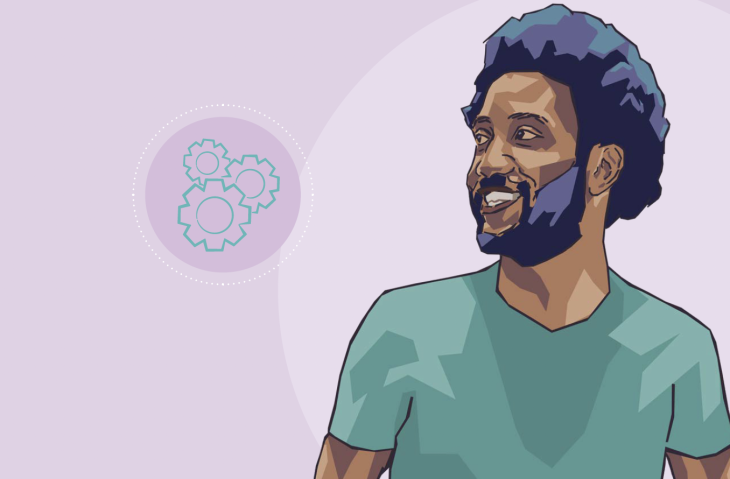
Ryan Lewis ’20 was one of the first people hired to work in the Maker Hub after it opened. A computer science major with a minor in applied math, Lewis was immediately intrigued by the collaborative workspace concept that the hub offered.
Complex technological projects can be gargantuan tasks when going about them alone. Equipment can be expensive, and inexperience can pose a challenge. But thanks to the Maker Hub, creators are provided with not just the necessary tools, but the necessary guidance as well.
“Having a shared space to be able to come and work together and have tools and experience from other people, I thought was a great idea,” Lewis says. “Not just the tool aspect, but the idea of being able to use the experience of another person who’s working in that lab and the Maker Hub. All sides of it I thought were cool.”
Lewis had been kicking around several ideas for a Kickbox project, and after discussing it with his sponsor, Assistant Professor of Computer Science Ryan Mattfeld, decided to go with one of his more attainable ideas — an embedded piano controller.
Lewis had an electronic piano that he hadn’t been able to play much due to the rigor of college life. For him, the project was a way to get back into something he loved while incorporating new knowledge he’d gained.
Each key of a piano is programmed with data that corresponds to certain musical notes. Lewis began to wonder if he could take that data meant for playing music and deploy it to achieve other tasks, such as turning on a light.
“The idea was that rather than think of them as all independent keys to play music, they can also be buttons that do specific things,” Lewis says. “The ultimate goal was to make a key that can do a thing when you play a song the right way.”
Lewis thoroughly researched the framework of pianos, data structures and various other relevant topics, encountering several hiccups along the way with coding and troubleshooting. Nonetheless, at the end of the four months, Lewis achieved his goal by programming the piano to turn on a light, save computer files and other functions by using different sequences of notes.
The embedded piano project served as a direct bridge between his pastime of playing piano, his undergraduate studies in computer science and his career as a software engineer with L3Harris Technologies, a global aerospace and defense technology company.
“That project has propelled me forward in so many ways. Even now, there are times when I’ll be in meetings and I’ll know certain things about the Linux subsystem because of work I did on this project,” Lewis says. “It was a huge learning experience for me to bridge the gap of all these different things that I love doing and have this nice product at the end that could display all the different parts of it.”
Focused on Affordability
Melissa Haug PA’20 /// Physician Assistant
Project: Ultrasound Model for Ultra Cheap
Sponsor: Dr. Cynthia Bennett, associate professor of physician assistant studies
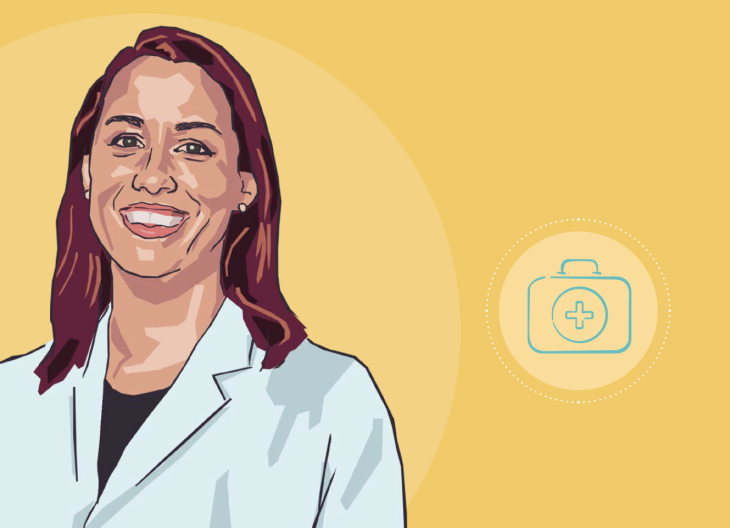
Like other students enrolled in Elon’s Physician Assistant Studies program, Melissa Haug was required to complete a master’s project to support her professional development during the two-year program. Ultrasound practices were a topic of focus for her cohort because of their prevalence in many areas of medicine, from detecting internal bleeding damage to guiding joint injections, which is how she currently uses ultrasound imaging in her field of choice — orthopedics. She decided to partner with fellow student Jo-Ku Teng G’20 to focus on their master’s project on ultrasound imaging.
As luck would have it, representatives from the Maker Hub had reached out to see if anyone was interested in applying for the Kickbox project, with additional funding for their master’s projects as an incentive. “I talked with my adviser, and we weren’t quite sure at the time how we were going to utilize Kickbox. We just knew that it would be helpful,” Haug says. “The desire to get the Kickbox helped to guide the plan for my project.”
PA students practice invasive procedures on mannequins that can cost upward of $10,000. Haug’s objective was to create a similar mannequin with the same capabilities at a fraction of the price so students can be proficient in their practices. “We decided to make something that was reusable and affordable for programs that don’t have funding to get those mannequins,” she says.
Haug created a mold and model of a human neck and torso with vasculature inside connected to water pumps to teach students how to do these procedures using ultrasound guidance. She found a retail-style mannequin and used tools in the Maker Hub to cut it in half, keeping the top half. She then worked out the right combination of gelatin mixture to create a realistic version of human skin. She also added different types of tubing that could withstand multiple uses to mimic veins. Those tubes attached to a water pump, similar to those found in fish tanks, to mimic blood flowing in veins and arteries. “I put some Kool-Aid in the water so that it was red, just for fun,” she says.
Although the pandemic stifled her plan to make the model into something that could be 3D printed, Haug is still glad she applied for a Kickbox. The structure, specificity and collaborative nature of the program, which stimulates creativity, were invaluable to her. “I’m glad that I was introduced to the Maker Hub for my project,” she says. “I got different opinions from people who were not medical, which was very helpful because they have a different standpoint on things.”
A Maker Mindset
Wyatt Allen ’23 /// Engineering Major
Project: Smart Coffee Table
Sponsor: Scott Wolter ’85, associate professor of engineering
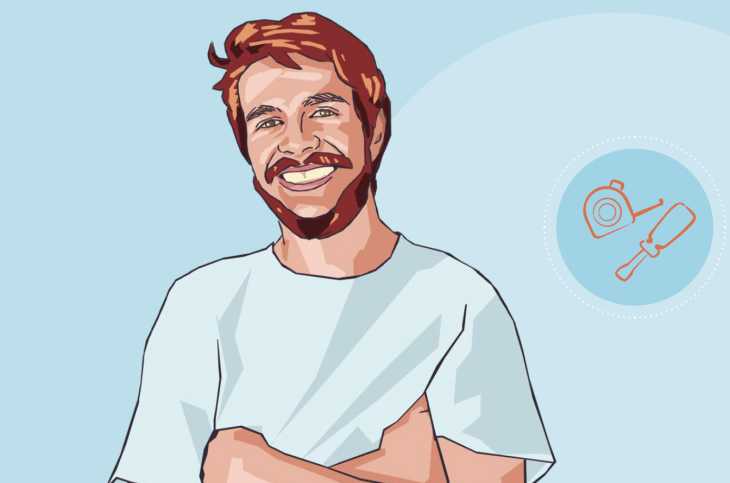
The items you select to decorate your home say a lot about your character, interests and personality. For engineering major Wyatt Allen ’23, an avid music lover and the son and grandson of amateur woodworkers, a “smart” coffee table fashioned out of pine wood with electronic displays and speakers sums him up perfectly.
“Music is a big part of my life. I listen to music all the time and I always have a speaker in my room. And to be completely honest, I just needed a table for my room,” Allen says, adding that his love of music and his need for a table meshed together to form the concept for his Kickbox project.
His smart coffee table plugs into an outlet and has speakers and a display board to show volume and media sources. Allen also plans to add a wireless charging port and engraved designs to improve the functionality of the table while also making it more personal.
Despite the table’s many modern features, Allen chose to make it out of
pine because it has a more rustic feel. He didn’t confront many challenges in building it but did have to tinker with the different components before he was fully satisfied with it. “My biggest problem was making sure that everything fits together, and all my measurements were correct,” Allen says. “There were a bunch of little things along the way that slowed me down by a day or two. But I could figure it out within 20, 30 minutes of research or reworking.”
He aspires to work in renewable energy, and he credits his experiences at the Maker Hub and with the Kickbox project for helping him gain the essential skills necessary to one day make that aspiration a reality.
“It teaches you how to progress through an idea in terms of brainstorming, research and development of the idea, your prototypes, and then even beyond that, how to market it or share it with other individuals,” Allen says. “There’s a lot of information along the way that the Kickbox offered that made the project a lot better than I could have done on my own.”


